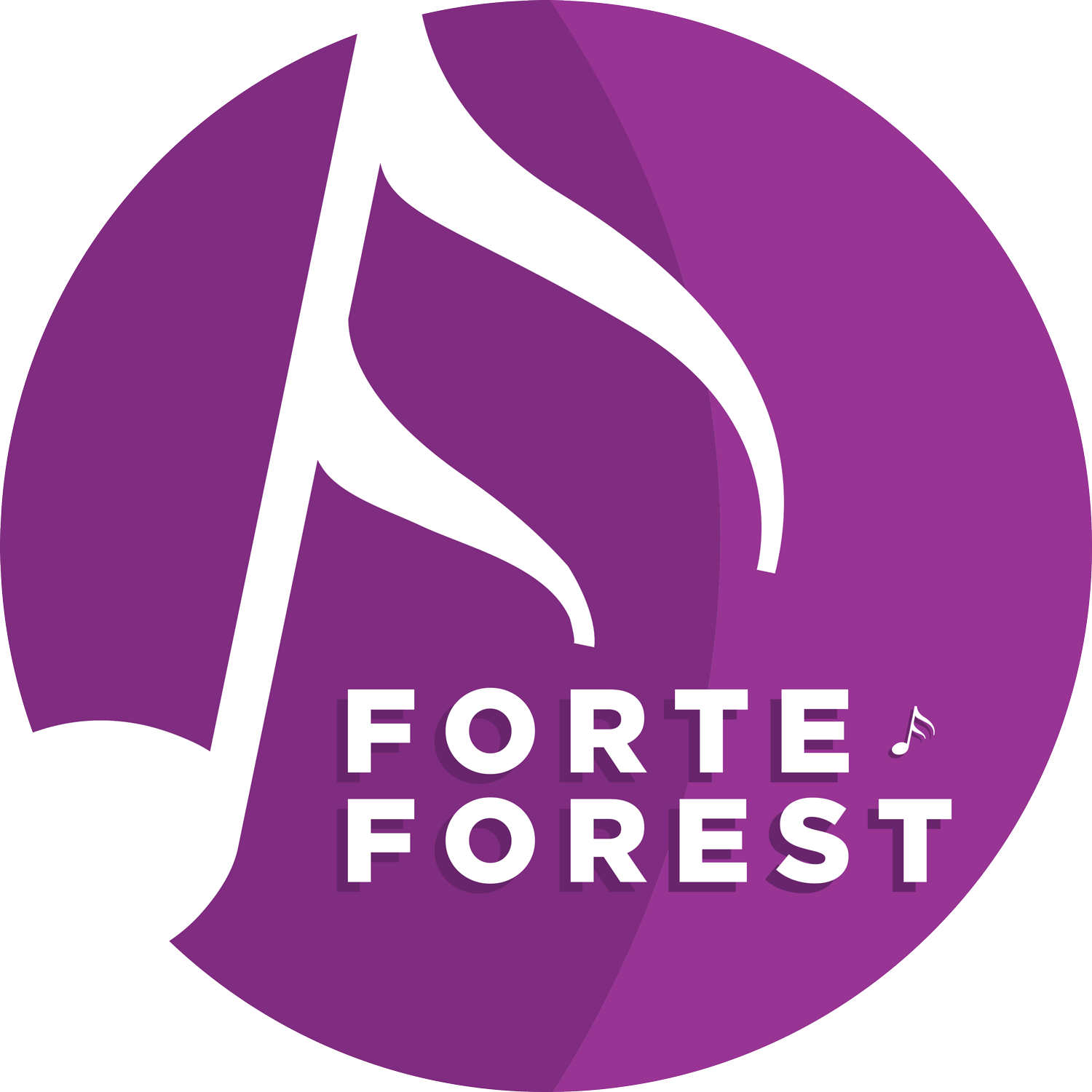My teaching methods are the result of a blend of the philosophies of Carl Orff, John Feierabend, Zoltan Kodaly, and Emile Jaques-Dalcroze, with my training in the Orff-Schulwerk method being predominant. Continue reading to learn a little about each approach to music education and how I mix them together in my lessons.
Teaching Methods
Forte Forest Teaching Methods: A Beautiful Blend
Orff-Schulwerk Method
German composer Carl Orff (1895-1982) and educator Gunild Keetman (1904-1990) designed an approach to building musicianship in young students through music, movement, speech and drama. Children are active participants in singing, chanting, playing instruments, dancing, dramatizing, and moving. The Orff-Schulwerk method begins with what children love to do most: play! The teaching process then goes on to involve imitation, exploration, and improvisation. Students develop critical-thinking and problem-solving skills, learn to work cooperatively and express their emotions appropriately, and build their self-esteem.
The Orff method does not focus on traditional music literacy (reading music notes on a staff). The emphasis is on the process of learning and participation by all, with the freedom for creating and developing ideas, rather than reproducing set forms. Learning to read music notation should be built on previous knowledge and the sound should always precede the symbol. In other words, the children should be familiar with how a certain written notation sounds, feels, and is used in music before trying to learn to replicate it by looking at a symbol.
Learn more about the Orff-Schulwerk method.
Feierabend
John Feierabend’s curriculums are designed to prepare children to become musical in three ways:
- Tuneful – to have tunes in their heads and learn to coordinate their voices to sing those tunes.
- Beatful – to feel the pulse of music and how that pulse is grouped in either 2s or 3s.
- Artful – to be moved by music in the many ways music can elicit a feelingful response.
Feierabend believes that adults who are tuneful, beatful, and artful are better able to participate in a community by enjoying opportunities to sing with others such as singing hymns at church or their alma mater at college events, dance with others at weddings or clap in time with others at events, and share and listen to music with others in concert halls, community bands and choirs.
The Feierabend curriculum suggests that each lesson include eight pieces of a musical workout:
- Pitch Exploration (Vocal warm-ups)
- Fragment Singing (Echo Songs or Call and Response Songs)
- Simple Songs (Songs a child can learn to sing easily after hearing a few repetitions)
- Arioso (Child created tunes)
- Songtales (Stories the teacher sings)
- Movement Exploration (Movement warm-ups)
- Movement for Form and Expression (Reacting to the patterns heard in recorded music)
- Movement with the Beat (Imitating the teacher or creating one’s own moves to the beat)
Learn more about Feierabend’s music curriculum.
Kodaly Concept
Like Orff and Feireabend, the Kodaly Concept focuses on experiences. However, the concept developed by Hungarian composer, musician, and educator Zoltan Kodaly (1882-1967) is focused almost entirely on singing. While I do not follow the comprehensive Kodaly program completely and have no formal training in the program, I do strongly believe in learning folk songs and games from both America and other cultures, which is the basis of the Kodaly program. Folk music has stood the test of time. Songs and games that have been around for centuries are great vehicles for learning musical concepts and skills.
You can learn more about the Kodaly Concept.
Dalcroze Approach
The Dalcroze approach is based on the philosophy that our own bodies are an instrument. Emile Jacques-Dalcroze capitalized on the natural, instinctive desire to move when we hear a rhythm or music. He asked his Geneva Conservatory students to walk, swing their arms, tap their feet, sway, or conduct with their hands while they sang or listened to him play piano. He called this study through movement “eurhythmics” from the Greek roots meaning “good flow”. The complete Dalcroze approach consists of Eurhythmics, to teach rhythm, structure, and expression through movement; Solfege, to develop an understanding of pitch, scale, and tonality; and Improvisation, to develop an understanding of form and meaning through spontaneous musical creation using movement, voice, and instruments. Intertwining these three subjects develops the inner ear, muscular sense, and creative expression to form the basis of musicianship in a student. Learning music through this approach improves concentration, focus, coordination, balance, listening skills, and self-esteem.
Learn more about the Dalcroze approach.
The Forte Forest Way
Forte Forest classes incorporate bits and pieces of each of the above approaches to create lessons where students are active participants and engaged learners. Lessons will include a mixture of:
- Singing traditional children’s songs
- Learning folk songs, games, and dances from around the world
- Chanting rhymes and poems
- Hearing stories and books and sometimes adding dramatization
- Moving with scarves, ribbons, parachutes, or without props
- Imitating the teacher
- Echoing the teacher
- Creating original moves or ways to respond to music
- Exploring new ways to play, move, or use our voices
- Reading non-traditional and traditional music notation
- Performing with body percussion
- Playing simple percussion instruments such as rhythm sticks, drums, maracas, tambourines, and children’s xylophones
Lessons encourage that each child participate at his/her own level while practicing appropriate ways to express themselves, exercising their singing voices, learning to keep a steady beat, and beginning to understand the way music is put together (and having a lot of fun!)
© Copyright 2018 Forte Forest Music Education
Website Management by <a href="mailto:jw@justinwatsondesign.com">Justin Watson</a>

